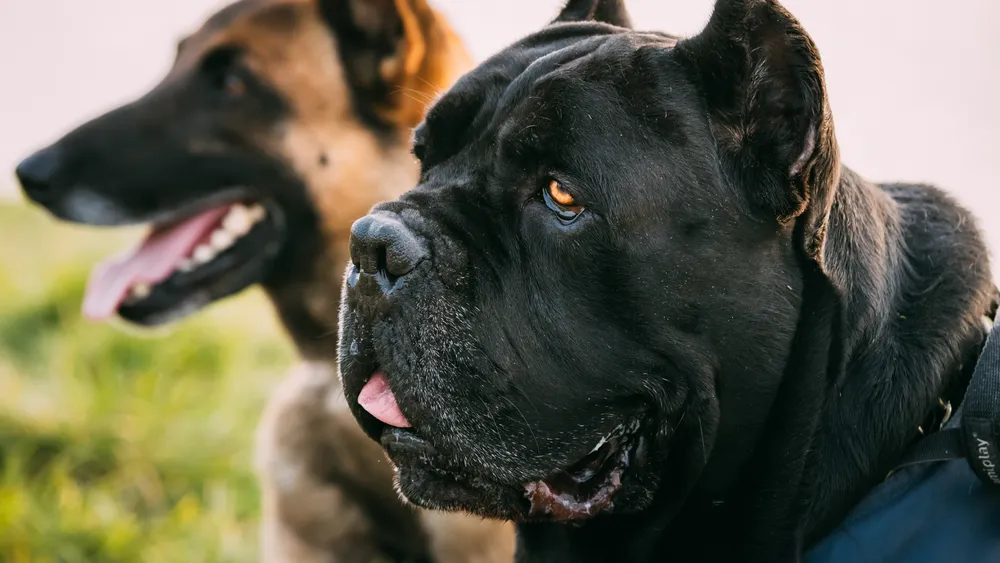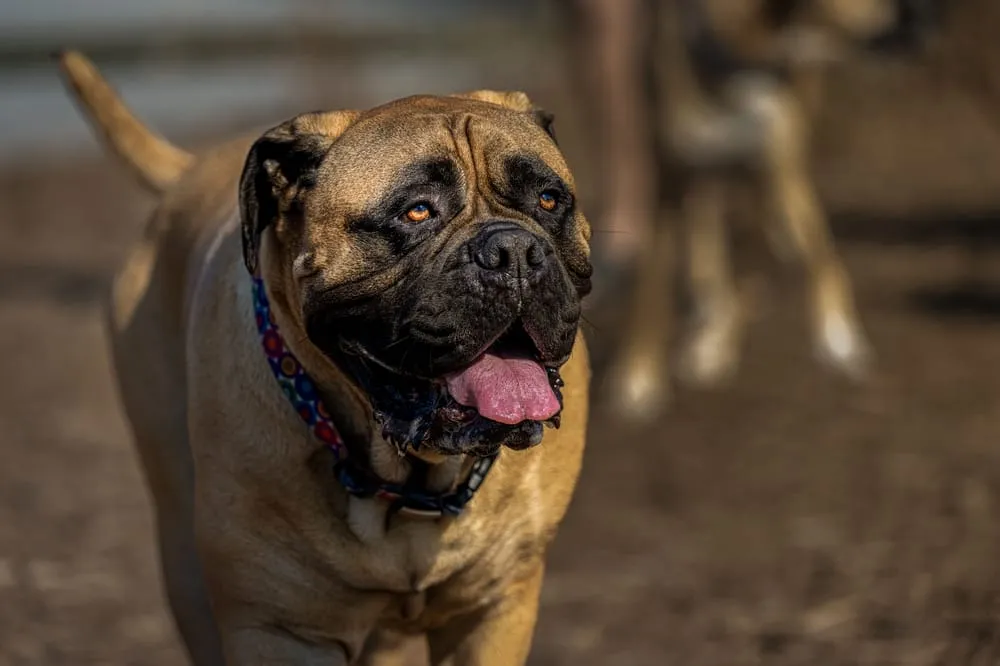Mastiff dogs are known for their impressive size and gentle nature. However, for those with allergies, owning a dog can be a challenge. Dog allergies are caused by a reaction to proteins found in a dog's skin cells, saliva, and urine. This can cause symptoms such as sneezing, runny nose, and itchy eyes. As a result, many people with allergies wonder if mastiff dogs are hypoallergenic.

Unfortunately, mastiff dogs are not considered hypoallergenic. While they have short hair and shed less than some other breeds, they still produce dander and can trigger allergic reactions. Additionally, mastiffs are known to drool, which can also exacerbate allergy symptoms. However, it's important to note that each person's allergies are unique and some may be less affected by mastiff dogs than others.
Understanding Hypoallergenic Dogs
Definition of Hypoallergenic
Hypoallergenic dogs are those that produce fewer allergens than other dog breeds. Allergens are substances that trigger an allergic reaction in some people. These allergens can be found in a dog's dander, saliva, and urine. Hypoallergenic dogs are not completely allergen-free, but they can be a good option for people who suffer from allergies.
Common Hypoallergenic Breeds
There are several dog breeds that are considered hypoallergenic. These breeds include the Bichon Frise, Chinese Crested, Coton de Tulear, Maltese, and Poodle. These breeds typically have hair instead of fur, which means they shed less and produce fewer allergens.

Allergy Sufferer Considerations
While hypoallergenic dogs can be a good option for people with allergies, it's important to note that not all allergy sufferers will react the same way to every hypoallergenic breed. Allergies are caused by an overactive immune system, which can produce a range of symptoms including sneezing, itching, and watery eyes. It's important for allergy sufferers to spend time with a hypoallergenic dog before bringing one into their home to see if they have a reaction.
In conclusion, while no dog breed is completely allergen-free, hypoallergenic dogs can be a good option for people who suffer from allergies. It's important to do research and spend time with a hypoallergenic dog before making a decision, as every allergy sufferer may react differently to different breeds.
Mastiff Breed Overview
Mastiffs are a group of large, powerful dogs that have been bred for centuries to perform various tasks, including guarding, hunting, and fighting. While there are many different types of mastiffs, the English Mastiff is perhaps the most well-known and popular.
Origin and History
The history of the mastiff breed can be traced back to ancient times, where they were used by the Romans as war dogs. Over time, mastiffs were bred and developed in many different parts of the world, resulting in a wide variety of breeds with different physical and temperamental characteristics.
Physical Characteristics
Mastiffs are known for their impressive size and weight, with some individuals weighing over 200 pounds. They have a short, dense coat that can come in a variety of colors, including fawn, apricot, and brindle. Mastiffs also have distinctive features, such as their droopy ears and wrinkled faces.
Temperament and Personality
Despite their intimidating size, mastiffs are generally known for their gentle and affectionate personalities. They are loyal and devoted to their families, and often get along well with children and other pets. However, due to their size and strength, it's important for mastiffs to receive proper training and socialization from a young age.
Overall, mastiffs are a fascinating and unique group of dogs that have a rich history and many admirable qualities. While they may not be hypoallergenic, they make excellent companions for those who are looking for a loyal and loving pet.
Mastiffs and Allergens
Mastiffs are a popular breed of dog, known for their large size and gentle nature. However, for those who suffer from allergies, owning a mastiff can be a concern. In this section, we will explore the different ways in which mastiffs can affect allergies and what you can do to minimize the risk.

Coat and Shedding
Mastiffs have a double coat, which means they have a dense undercoat for insulation and a coarser outer coat for protection. This type of coat requires regular grooming to prevent matting and tangling. Mastiffs shed their coats twice a year, which can be a concern for allergy sufferers. However, regular brushing and bathing can help to minimize shedding and reduce the amount of pet hair in the home.
Saliva and Dander
Mastiffs are known for their slobbering, which can be a concern for those with allergies. Saliva contains allergens that can cause reactions in sensitive individuals. Additionally, mastiffs produce dander, which is small flakes of skin that can also trigger allergies. Regular cleaning can help to remove dander and reduce the risk of allergic reactions.
Mastiff Grooming Needs
Regular grooming is essential for mastiffs to maintain their coat and prevent matting. Brushing should be done at least once a week to remove loose hair and prevent shedding. Bathing should be done every few months or as needed to keep the coat clean and reduce the risk of allergens. It is important to use a hypoallergenic shampoo to avoid further irritation.
In conclusion, mastiffs are not hypoallergenic, but with regular grooming and cleaning, the risk of allergic reactions can be minimized. It is important to keep the home clean and use hypoallergenic products to reduce the risk of allergens.
Managing Allergies with Mastiffs
Mastiffs are known for their large size, loyalty, and protective nature. However, they are not hypoallergenic dogs and can cause allergies in some people. If you or someone in your household suffers from allergies, there are ways to manage them while living with a Mastiff.
Home Environment Adjustments
Making adjustments to the home environment can help reduce exposure to allergens. For example, keeping the Mastiff out of the bedroom can help minimize exposure to dander and saliva. Additionally, using air filters and vacuuming carpets regularly can help remove allergens from the air and surfaces.
Regular Cleaning Routines
Regular cleaning routines are essential when living with a Mastiff. Cleaning surfaces, such as floors and furniture, with a damp cloth can help remove dander and saliva. Washing the Mastiff's bedding and toys regularly can also help reduce allergens in the home.
Allergy Treatments and Strategies
There are allergy treatments and strategies that can be used to manage allergies while living with a Mastiff. For example, allergy sufferers can take allergy medication or receive allergy shots to help reduce symptoms. Additionally, using hypoallergenic shampoos and regularly grooming the Mastiff can help reduce dander and saliva.
It is important to remember that everyone's immune system is different, and what works for one person may not work for another. If allergies persist, it may be necessary to consider rehoming the Mastiff to a family without allergies.
Choosing a Mastiff
When it comes to choosing a Mastiff, there are several factors to consider. This section will cover the pros and cons of Mastiff ownership, finding a reputable breeder, and considerations for allergic owners.
Pros and Cons of Mastiff Ownership
Mastiffs are known for their affectionate and protective nature, making them great family pets. However, they are also a large breed and require plenty of space and exercise. Additionally, their protective nature can sometimes lead to aggression towards strangers or other animals.

Finding a Reputable Breeder
If you decide to buy a Mastiff, it is important to find a reputable breeder. The Mastiff Club of America is a good resource for finding breeders who adhere to ethical breeding practices and health testing. It is also recommended to visit the breeder in person and ask to see the puppy's parents and health records.
Considerations for Allergic Owners
Unfortunately, Mastiffs are not hypoallergenic and can trigger allergies in some people. However, there are steps allergic owners can take to minimize their symptoms, such as regularly grooming their Mastiff and keeping them out of certain areas of the house. It is also worth considering adopting a Mastiff from a shelter or rescue organization, as this can give allergic owners an opportunity to spend time with the dog and determine if they can tolerate their allergies before committing to ownership.
Mastiff Health and Care
Exercise and Training
Mastiffs are known for their calm and gentle nature, but they still require regular exercise to maintain their health. A daily walk or playtime in a fenced yard is recommended. It's important to keep in mind that Mastiffs are a large breed and should not be over-exercised, especially during hot weather.
Training a Mastiff requires patience and consistency. They are intelligent dogs, but can be stubborn at times. Positive reinforcement is the most effective training method for Mastiffs. Early socialization and obedience training are important to prevent any behavioral issues.
Diet and Nutrition
A well-balanced diet is crucial for a Mastiff's health. They require a high-quality dog food that is appropriate for their size and age. Overfeeding can lead to obesity, which can cause various health problems. It's important to monitor their food intake and provide them with plenty of fresh water.
Common Health Concerns
Mastiffs have a lifespan of 6-10 years and are prone to certain health issues. Hip dysplasia is a common problem in the breed, which can cause pain and mobility issues. Bloat is another concern, which is a life-threatening condition that requires immediate veterinary attention. It's important to keep up with regular vet visits and monitor any changes in their behavior or health.
Overall, proper care and attention are crucial for a Mastiff's health and well-being. With a balanced diet, regular exercise, and proper training, they can live a happy and healthy life.
Non-Hypoallergenic Alternatives
While Mastiffs are not hypoallergenic, there are other non-shedding breeds that may be suitable for individuals with allergies. Some of these breeds include Affenpinschers, Barbets, Bologneses, and Giant Schnauzers.
Other Non-Shedding Breeds
- Affenpinschers: These small dogs are known for their wiry coats that do not shed much. They are also hypoallergenic, making them a great choice for allergy sufferers.
- Barbets: These medium-sized dogs have curly, wooly coats that do not shed much. They are also hypoallergenic and have a friendly, outgoing personality.
- Bologneses: These small dogs have fluffy, white coats that do not shed much. They are also hypoallergenic and have a playful, affectionate personality.
- Giant Schnauzers: These large dogs have wiry, non-shedding coats that require regular grooming. They are also hypoallergenic and have a loyal, protective personality.
It's important to note that while these breeds are non-shedding and hypoallergenic, they may still produce some allergens that can affect certain individuals. It's always best to spend time with a dog before bringing them into your home to ensure that you are not allergic to them.
For individuals who prefer purebred dogs, there are also several non-shedding breeds available. These include the Bichon Frise, Havanese, Poodle, and Portuguese Water Dog. These breeds are also hypoallergenic and have their own unique personalities and characteristics.

Conclusion
In conclusion, the question of whether mastiff dogs are hypoallergenic is complex and depends on various factors. While no dog breed can guarantee complete immunity from allergens, mastiffs, with their unique qualities, can be considered by individuals with mild allergies. It's crucial to weigh the pros and cons, adopt preventive measures, and manage allergies effectively to ensure a harmonious relationship between mastiffs and their owners.
FAQs
- Can mastiff dogs completely eliminate allergic reactions?
- While no dog breed can guarantee complete elimination of allergies, mastiffs, with their hypoallergenic features, may be suitable for individuals with mild allergies.
- What grooming practices are essential for minimizing allergens in mastiffs?
- Regular grooming, including brushing and bathing, is crucial to minimize shedding and dander, reducing the risk of allergic reactions.
- Are there specific mastiff breeds more hypoallergenic than others?
- The hypoallergenic qualities may vary among different mastiff breeds. It's essential to research each breed's characteristics to find a suitable match.
- Can environmental factors influence allergic reactions to mastiffs?
- Yes, environmental factors such as air quality and cleanliness can impact allergic reactions. Maintaining a clean living environment can help minimize allergens.
- What are some alternative hypoallergenic breeds for individuals with severe allergies?
- Breeds like poodles, bichon frises, and schnauzers are often considered hypoallergenic alternatives for individuals with severe allergies.